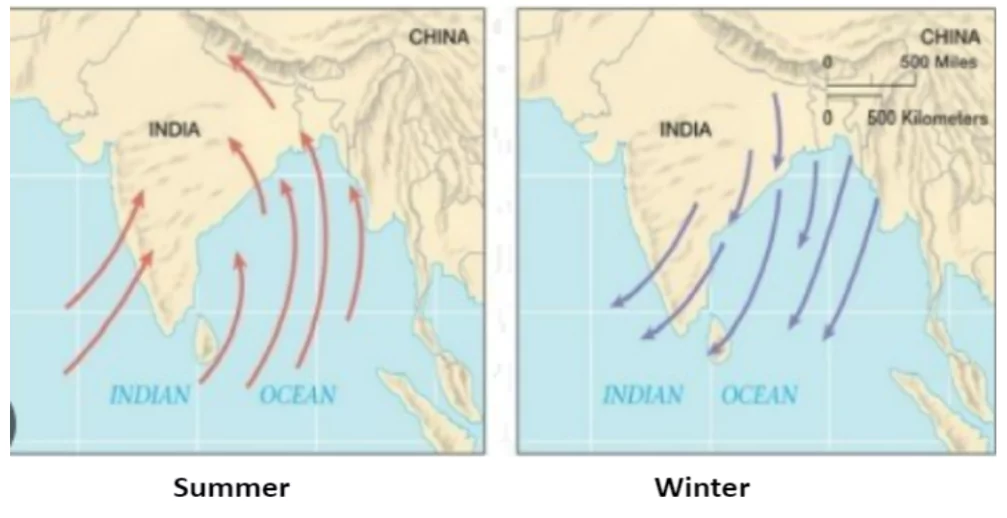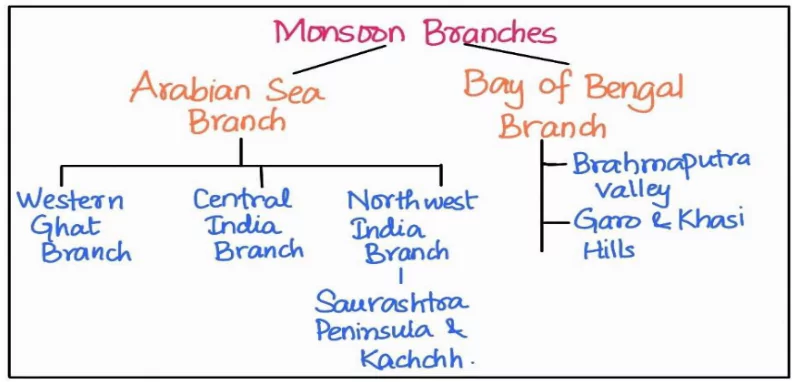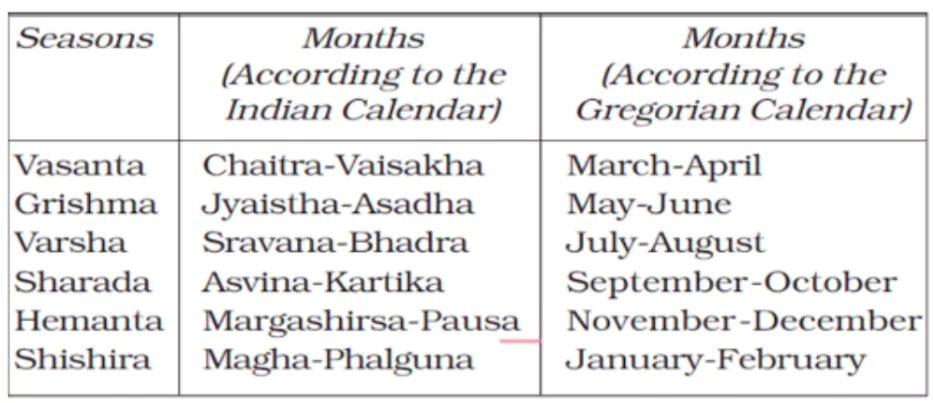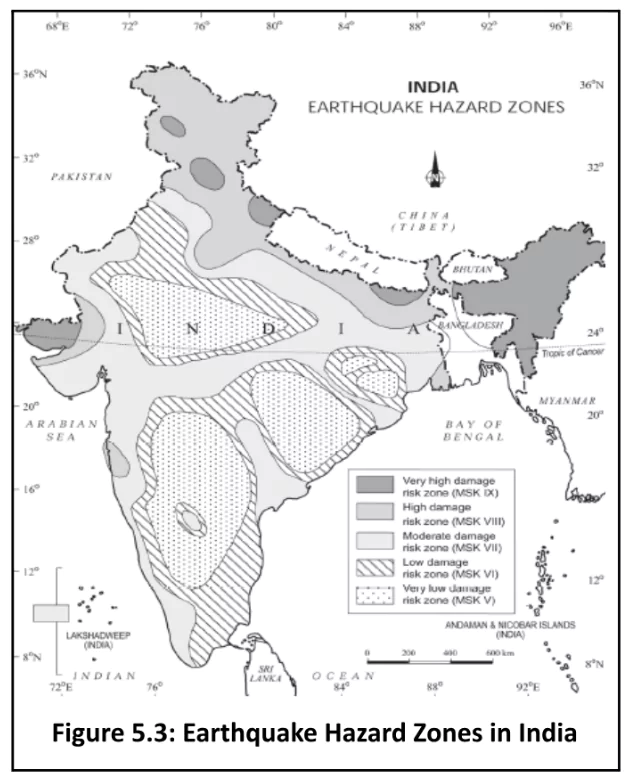The southwest monsoon season in India marks the arrival of much-awaited rainfall, crucial for agricultural activities and replenishing water sources. It is driven by seasonal wind reversals and the shifting of the Inter-Tropical Convergence Zone (ITCZ); this monsoon system brings relief from the scorching summer heat. Understanding the mechanisms behind this phenomenon helps in anticipating its onset and assessing its impact on various regions across the country.
India’s Monsoon: From Mechanisms to Impacts
A. Mechanism of Monsoon
- Seasonal Reversals: Monsoon is characterised by seasonal reversals of the wind system.
- Northward Shift of ITCZ: Landmass in the north of Indian ocean gets intensely heated during April and May when the sun shines vertically over the Tropic of Cancer leading to formation of an intense low pressure in the northwestern part of the subcontinent.
- These conditions help in the northward shift in the position of the ITCZ.
 Inter-Tropical Convergence Zone (ITCZ): It is a low-pressure zone located at the equator
Inter-Tropical Convergence Zone (ITCZ): It is a low-pressure zone located at the equator
- Where trade winds converge & tends to ascend. In July, the ITCZ is located around 20°N-25°N latitudes (over the Gangetic plain), sometimes called the monsoon trough leading to development of thermal low over north and northwest India.
- Due to the shift of ITCZ, the trade winds of the southern hemisphere cross the equator and start blowing from southwest to northeast due to the Coriolis force.
- ITCZ moves southward in winter, and so the reversal of winds from northeast to south and southwest, takes place. They are called northeast monsoons.
- Shifting of the ITCZ: It is related to withdrawal of the westerly jet stream from its position (south of the Himalayas) over the north Indian plain.
- Low Pressure Cell: attracts the Southeast trades across the Equator. These winds cross the Equator between 40°E and 60°E longitudes.
- Easterly Jet Stream: sets in along 15°N latitude only after the western jet stream has withdrawn. It is held responsible for the Monsoon’s sudden burst.
Enroll now for UPSC Online Course
Onset of the Monsoon into India
- Coastal Areas: like Kerala, Karnataka, Goa, and Maharashtra typically experience this burst in the first week of June,
- Interior Regions: witness it by the first week of July.
- The monsoon approaches the landmass in two branches:
 Arabian Sea branch
Arabian Sea branch
- Western Ghats and Rain-shadow Effect: The monsoon winds from the Arabian Sea ascend the Western Ghats’ slopes, cooling down in the process and causing Orographic rainfall.
- After crossing the windward side, wind descends, warms up and loses moisture thus resulting in minimal rainfall on the leeward side of Ghats.
- Central India Impact: Another branch moves through the Narmada and Tapi river valleys, bringing rainfall to vast areas of central India.
- Eventually, these winds reach the Ganga plains and merge with the monsoon winds of the Bay of Bengal.
- The Chotanagpur plateau receives some rainfall from this branch.
- Northwest India and Himalayan Influence: The third branch hits the Saurashtra Peninsula and Kachchh, moving parallel to Aravallis producing limited rainfall.
- In Punjab and Haryana, it converges with the Bay of Bengal monsoon branch, producing rain in the western Himalayas.
- Bay of Bengal Branch
- Myanmar Coast: Initially hit the Myanmar coast and parts of southeast Bangladesh.
- Arakan Hills along Myanmar’s coast, redirects a significant portion of this branch towards the Indian subcontinent.
- Monsoon enters West Bengal and Bangladesh from the south and southeast.
- Two Streams: Influenced by the Himalayas and the thermal low in northwest India, this monsoon branch divides into two major streams:
- One stream moves westward along the Ganga plains, extending to the Punjab plains;
- The other heads north, traveling up the Brahmaputra valley, its sub-branch targets the Garo and Khasi hills in Meghalaya.
- Mawsynram (Khasi Hills): receives the highest average annual rainfall.
- Tamil Nadu: coast is situated parallel to and in the rainshadow area of the Bay of Bengal branch and Arabian sea branch respectively. It receives rain from the North East branch of retreating monsoon winds.
- ‘Breaks’ in Monsoon: If rain fails to occur for one or more weeks during the south-west monsoon period, it is known as a break in the monsoon.
- Reasons: Decrease in frequency of rain-bearing storms along the monsoon trough or the ITCZ in northern India.
- When winds blow parallel to the west coast.
- When the southern branch of Subtropical Westerly Jet stream gets reestablished again, high pressure conditions continue to exist, preventing the monsoon winds from flowing towards India.
- Easterly Jet Stream and Tropical Cyclones: Easterly Jet Stream guides tropical depressions into India, significantly influencing monsoon rainfall distribution.
- The paths of these depressions are high rainfall zones.
- The frequency, direction, and intensity of these depressions shape India’s monsoon rainfall pattern.
- Role of Tibetan Plateau: Tibet plateau plays a crucial role in initiating the monsoon circulation. Due to its enormous height and rarified atmosphere, it receives more insolation than the neighbouring areas.
- Tropical Easterly Jet Stream: Heating of these areas leads to air circulation in the middle troposphere that blows southward and develops into the Tropical Easterly Jet stream (flows from the Tibetan Plateau to Mascarene High in the Indian Ocean)
- Somali Jet Stream: During the summer, the Somali jet stream also forms at low altitude. Monsoon winds are directed towards India by this jet stream.
- The monsoon is better when the Somali current is strong.
- Jet streams: Narrow bands of strong wind that generally blow from west to east all across the globe.
- The two most constant jet streams are the mid-latitude and subtropical jet streams
- El-Nino: The system involves oceanic and atmospheric phenomena with the appearance of warm currents off the coast of Peru in the Eastern Pacific.
- EI-Nino is an extension of the warm equatorial current which gets replaced temporarily by cold Peruvian current or Humboldt current.
- It increases the temperature of water on the Peruvian coast.
- During El-Nino years, the onset of southwest monsoon gets delayed and leads to dry conditions and deficient monsoon
- La-Nina: During La Nina events, the trade winds in the tropical Pacific Ocean become even stronger, intensifying the normal east-to-west flow of warm surface waters across the equatorial Pacific.
- This strengthening of the trade winds leads to cooler-than-average sea surface temperatures in the central and eastern equatorial Pacific.
- It helps in intensification of south-west monsoon.
- Indian Ocean Dipole(IOD): Difference in subsurface temperature (SST) of eastern and western Indian ocean.
- Positive IOD: is good for monsoon despite an El Nino year. [UPSC 2017]
- Walker Circulation: It is the result of a difference in surface pressure and temperature over the western and eastern tropical Pacific Ocean.
- Walker Cell: A pressure gradient from east to west creates an air circulation from the Eastern Pacific i.e. along the coast of Peru-Chile to western Pacific (Australia-New Guinea).
- Walker cell is associated with southern oscillation and its strength fluctuates with that of the Southern Oscillation Index (SOI).
- The Southern Oscillation is the term used to describe changes in air pressure, temperature, and sea surface temperatures between the Pacific and Indian seas.
- The Southern Oscillation’s intensity is gauged by the Southern Oscillation Index, or SOD [pressure differential between Port Darwin (northern Australia) and Tahiti (French Polynesia)].
- Rainfall in India can be predicted by analyzing the positive and negative values of the SOI, which is calculated by subtracting the Port Darwin pressure from Tahiti.
|
The Retreating Monsoon Season (The Transition Season)
- September’s Transition: By September’s end, the southwest monsoon weakens due to the southward shift of the low-pressure trough from the Ganga plain due to southward movement of the sun.
- October and November Transition: The months of October and November mark the phase of retreating monsoons.
- October Heat: During this retreat, clear skies dominate, and temperatures rise. While day temperatures are high nights are cool and pleasant. High temperature and humidity leads to the ‘October heat’.
- Cyclonic Influences: Rainfall in this season is primarily due to cyclonic depressions originating over the Andaman Sea affecting deltas of rivers like the Godavari, Krishna, and Kaveri.
- Cyclones are less prevalent in the Arabian Sea.
- The Coromandel coast mainly gets its rain from these cyclonic events.
Characteristics of Monsoon Rainfall
- Seasonal: Rainfall from the southwest monsoon is seasonal (June to September).
- Topographic Influence: Monsoonal rainfall is largely governed by relief or topography (Windward side of the mountains receives more rainfall)
- Distance from Sea: Rainfall decreases with increasing distance from the sea.
- Breaks in the Monsoon: The wet spells are interspersed with rainless intervals (‘breaks’).
- These breaks in rainfall are related to the pathways of cyclonic depressions (mainly formed in the Bay of Bengal) that determine the spatial distribution of rainfall.
Enroll now for UPSC Online Classes
Traditional Indian Seasons
In Indian tradition, the year is distinctively divided into six seasons, each lasting two months.

Distribution of Rainfall
- Average Rainfall: The average annual rainfall in India is about 125 cm with great spatial variations.
- High Rainfall Zones: with rainfall over 200 cm: west coast, Western Ghats, and the sub-Himalayan areas in the northeast; Rainfall > 1000 cm in some parts of the Khasi and Jaintia hills; Brahmaputra valley and adjoining hills get slightly less, under 200 cm.
- Medium Rainfall Zones: with rainfall between 100-200 cm: southern Gujarat, east Tamil Nadu, northeastern Peninsula covering Odisha, Jharkhand, Bihar, eastern Madhya Pradesh, northern Ganga plain
- Along the sub-Himalayas and the Cachar Valley and Manipur.
 Low Rainfall Zones: with rainfall between 50-100 cm; western Uttar Pradesh, Delhi, Haryana, Punjab, Jammu and Kashmir, eastern Rajasthan, Gujarat, and the Deccan Plateau.
Low Rainfall Zones: with rainfall between 50-100 cm; western Uttar Pradesh, Delhi, Haryana, Punjab, Jammu and Kashmir, eastern Rajasthan, Gujarat, and the Deccan Plateau.- Inadequate Rainfall Zones: with rainfall less than 50cm; Parts of the Peninsula, especially in Andhra Pradesh, Karnataka, Maharashtra, Ladakh, and most of western Rajasthan.
- Snowfall: This phenomenon is limited to the Himalayan region.
Variability of Rainfall
- The values of coefficient of variation show the change from the mean values of rainfall.
- Areas with < 25% Variability: Western coasts, Western Ghats, north-eastern Peninsula, eastern Ganga plains, north-eastern India, Uttarakhand, Himachal Pradesh, and southwestern Jammu and Kashmir. These areas have annual rainfall > 100cm
- Areas with >50% Variability: Regions like western Rajasthan, northern Jammu and Kashmir, and the interior Deccan plateau. These areas have annual rainfall < 50cm
- Areas with 25%-50% Variability: The remaining parts of India receiving between 50-100 cm of rainfall.
Conclusion
The southwest monsoon season plays a key role in shaping India’s climate and economy, with its arrival and intensity significantly impacting agricultural productivity, water resources, and overall livelihoods. The complex interplay of atmospheric and oceanic phenomena, such as the ITCZ shift, jet streams, and ocean currents, influence the distribution and variability of rainfall across different regions. By studying these patterns, we gain insights into the dynamics of the monsoon and its profound significance for the Indian subcontinent.
![]() May 4, 2024
May 4, 2024
![]() 5415
5415
![]() 0
0
 Inter-Tropical Convergence Zone (ITCZ): It is a low-pressure zone located at the equator
Inter-Tropical Convergence Zone (ITCZ): It is a low-pressure zone located at the equator
 Arabian Sea branch
Arabian Sea branch

 Low Rainfall Zones: with rainfall between 50-100 cm; western Uttar Pradesh, Delhi, Haryana, Punjab, Jammu and Kashmir, eastern Rajasthan, Gujarat, and the Deccan Plateau.
Low Rainfall Zones: with rainfall between 50-100 cm; western Uttar Pradesh, Delhi, Haryana, Punjab, Jammu and Kashmir, eastern Rajasthan, Gujarat, and the Deccan Plateau.